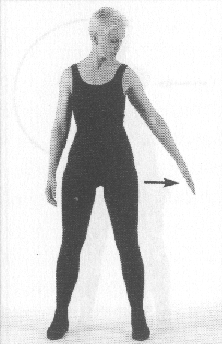
Fig. 291
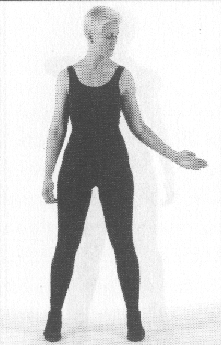
Fig. 292
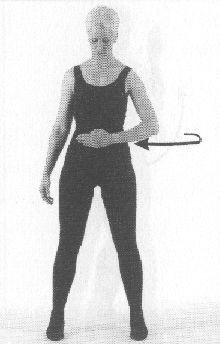
Fig. 293
The magical passes for the left body have no individual names. Don Juan said that the shamans of ancient Mexico called them just magical passes for the left body.
The first magical pass consists of fifteen carefully executed brief movements. Since the magical passes for the left body are done in a sequence, they are going to be numbered sequentially.
1. The left arm moves laterally about a foot away from its natural position by the thigh (fig. 291).
2. The palm is turned sharply to face the front as the elbow is slightly bent (fig. 292).
3. The hand is raised to the level of the navel and cuts across to the right (fig. 293).
4. The hand is turned sharply until the palm faces down (fig. 294).
5. The hand cuts across from right to left with the palm of the hand facing down (fig. 295).
6. The wrist turns sharply to the right; the hand is cupped, as if to scoop something, and the movement of the wrist makes it move upward with a jolt (fig. 296).
7. The arm is raised in an arc in front of the line dividing the two bodies to the level of the eyes, a foot away from it, with the palm of the hand facing left (fig. 297).
8. The wrist turns, making the hand face forward (fig. 298).
9. The arm goes out over the head, draws a lateral circle, and returns to the same position in front of the eyes with the palm of the hand facing left (fig. 299).
10. The wrist moves again to make the palm of the hand face forward (fig. 300).
11. The hand moves down toward the left, in a slight curve to the level of the shoulders, with the palm facing the ground (fig. 301).
12. The wrist is turned so the palm faces up (fig. 302).
13. The hand cuts to the right, to a point in front of the right shoulder (fig. 303).
14. The wrist moves again, turning the palm down (fig. 304).
15. The hand sweeps down to a position about a foot in front of the
left hip (fig. 305).

Fig. 291 |

Fig. 292 |

Fig. 293 |
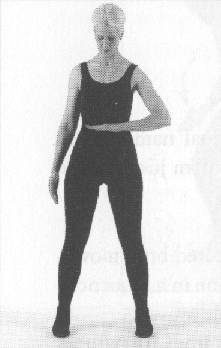
Fig. 294 |
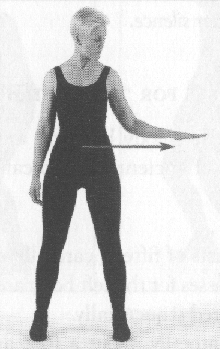
Fig. 295 |
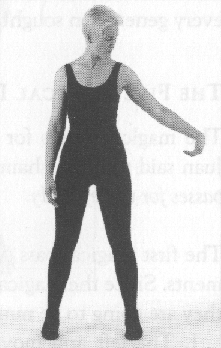
Fig. 296 |
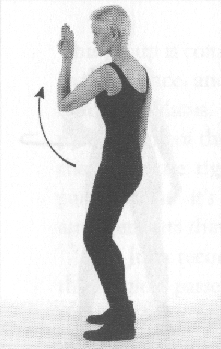
Fig. 297 |
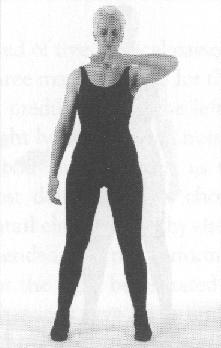
Fig. 298 |
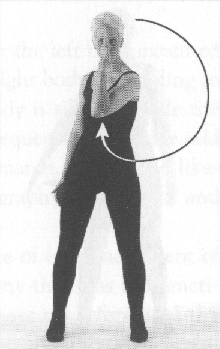
Fig. 299 |
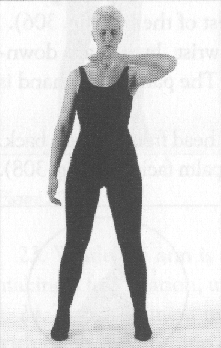
Fig. 300 |
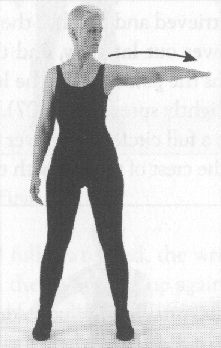
Fig. 301 |
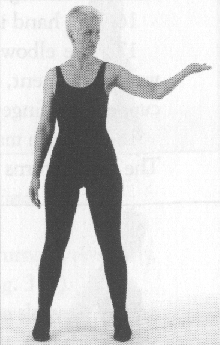
Fig. 302 |
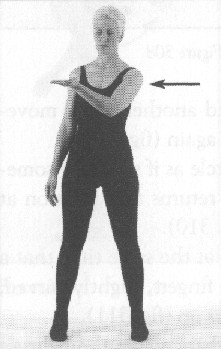
Fig. 303 |
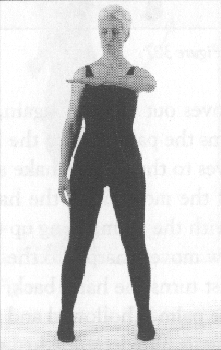
Fig. 304 |
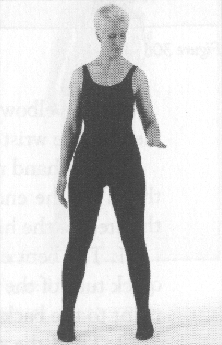
Fig. 305 |
The second magical pass is composed of nine movements.
16. The hand is retrieved and touches the crest of the hip (fig. 306).
17. The elbow moves out laterally, and the wrist, by a sharp down, ward movement, turns the palm to face the left. The palm of the hand is cupped, the fingers slightly spread (fig. 307).
18. The arm makes a full circle, going over the head from front to back. The hand returns to the crest of the hip with the palm facing up (fig. 308).
19. The elbow moves out laterally again, and another quick movement of the wrist turns the palm to face the left again (fig. 309).
20. The hand moves to the side to make a circle as if scooping some, thing. At the end of the movement, the hand returns to a position at the crest of the hip with the palm facing up (fig. 3 10).
21. The bent elbow moves sharply to the left at the same time that a quick turn of the wrist turns the hand back; the fingers, slightly curved, point to the back; the palm is hollowed and faces up (fig. 311).
22. Then the elbow is fully extended to the back while the palm of the cupped hand still faces up (fig. 312).
23. While the arm is still fully extended, the wrist turns over slowly, making a full rotation, until the palm faces up again (fig. 313).
24. This movement resembles pulling the arm out of a sleeve. Leading
with the elbow, the arm draws a circle from back to front, and the movement
ends with the palm of the hand up, at the level of the edge of the rib
cage, and the bent elbow touching the edge of the ribs (fig. 314).
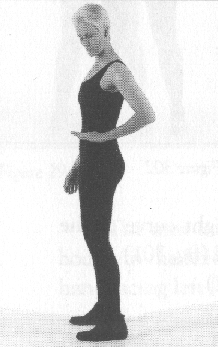
Fig. 306 |
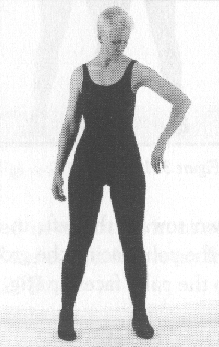
Fig. 307 |
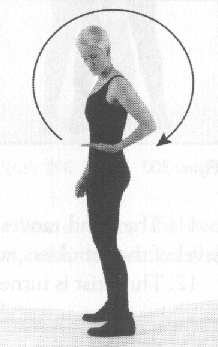
Fig. 308 |
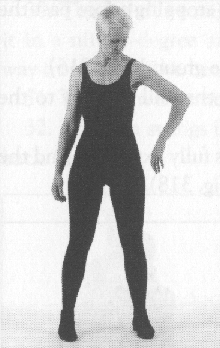
Fig. 309 |
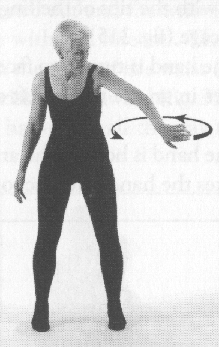
Fig. 310 |
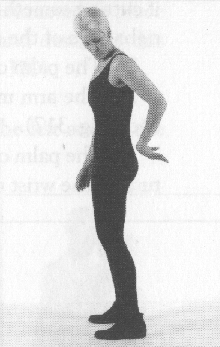
Fig. 311 |
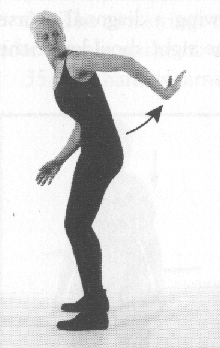
Fig. 312 |
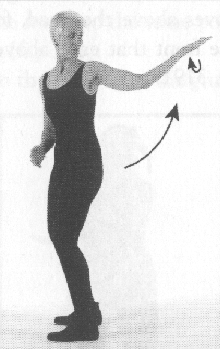
Fig. 313 |
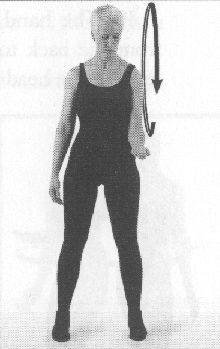
Fig. 314 |
The third magical pass is made up of twelve movements.
25. The hand moves in an are to the right with the palm facing up, as if cutting something with the tips of the fingers, stopping a foot past the right edge of the rib cage (fig. 315).
26. The palm of the hand is turned to face the ground (fig. 316).
27. The arm moves in an arc to the left and then all the way to the back (fig. 317).
28. The palm of the hand is hollow, the arm is fully extended, and the turn of the wrist makes the hand into a scoop (fig. 318).
29. The hand moves above the head, following a diagonal course from the back to the front that ends above the right shoulder at the level of the head (fig. 319).
30. The hand is straightened out and the wrist is contracted to place it in a ninety-degree angle with the forearm. The hand descends this way from above the head to the right of the waist (fig. 320).
31. The palm is turned briskly downward (fig. 3 2 1).
32. The arm swings in a half-circle all the way to the left and to the back (fig. 322).
33. The palm turns up (fig. 323).
34. The arm swings to the front, to the same position on the right, a foot away from the rib cage (fig. 324).
35. The hand is turned so the palm faces the ground again (fig. 325).
36. The arm swings to the left and returns to the same point behind
the back on the left side (fig. 326).
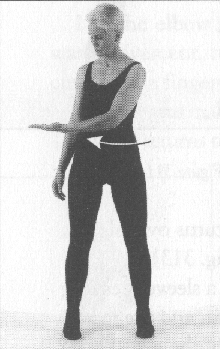
Fig. 315 |
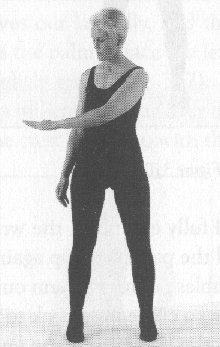
Fig. 316 |
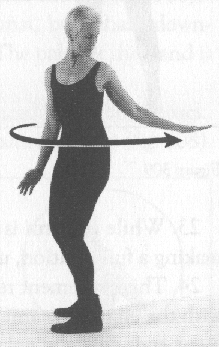
Fig. 317 |
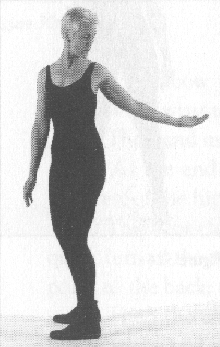
Fig. 318 |
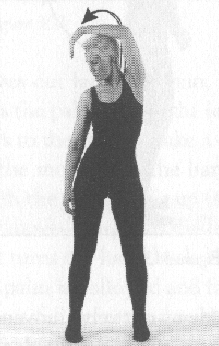
Fig. 319 |
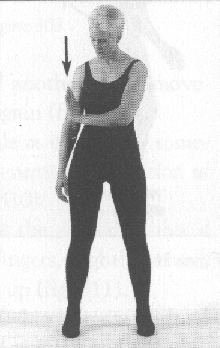
Fig. 320 |
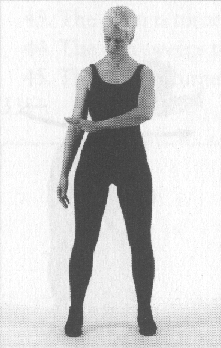
Fig. 321 |
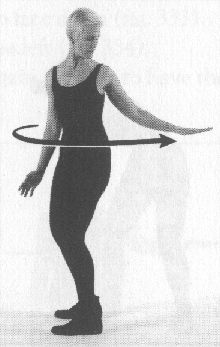
Fig. 322 |
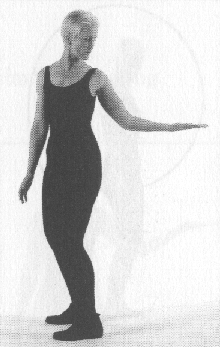
Fig. 323 |
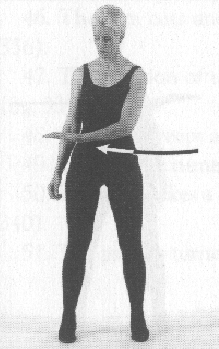
Fig. 324 |
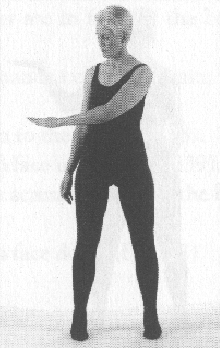
Fig. 325 |
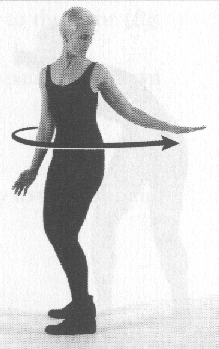
Fig. 326 |
The fourth magical pass consists of fifteen movements.
37. The arm swings in a big circle to the front, above the head, and to the back, and ends at a point about a foot away from the left thigh (fig. 327).
38. The head is turned to the left. The elbow is bent sharply and the forearm is raised to the level of the eyes, with the palm of the hand facing outward, as if shielding the eyes from light glare. The body stoops forward (fig. 328).
39. The head and trunk rotate slowly all the way to the right, as if to look in the distance with a shield over the eyes (fig. 3219),
40. The head and trunk rotate again to the left (fig. 330).
41. The palm of the hand is quickly turned to face up as the head and trunk move to look straight forward (fig. 331).
42. Then the hand cuts a line in front of the body from left to right (fig. 332).
43. The palm is turned to face down (fig. 333).
44. The arm sweeps to the left (fig. 334).
45. The wrist is turned again in order to have the palm facing up (fig. 335).
46. The arm cuts another are in front of the body to the right (fig. 336).
47. The position of the hand is changed again; the palm faces down (fig. 337).
48. The arm sweeps again to the left (fig. 338).
49. The palm is turned to face upward (fig. 339).
50. The arm makes a line across the front of the body to the right (fig. 340).
51. The palm is turned to face down (fig. 341).
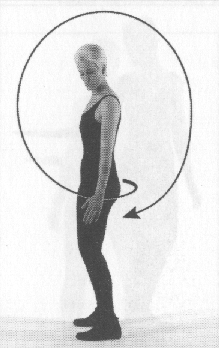
Fig. 327 |
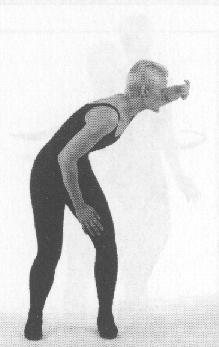
Fig. 328 |
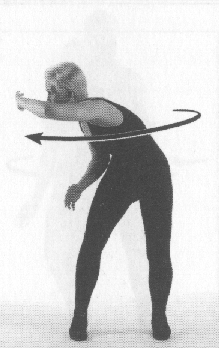
Fig. 329 |
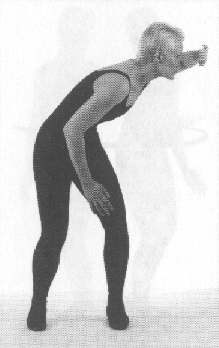
Fig. 330 |
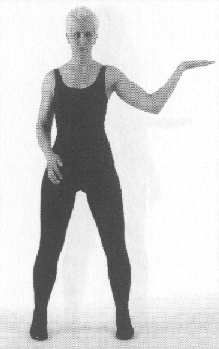
Fig. 331 |
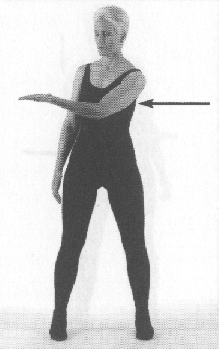
Fig. 332 |
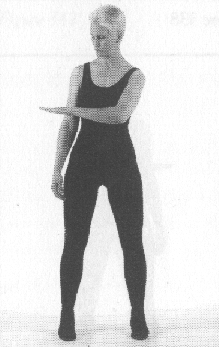
Fig. 333 |
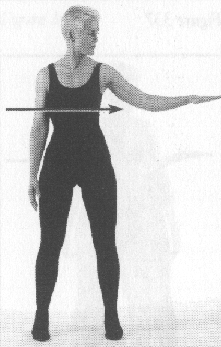
Fig. 334 |
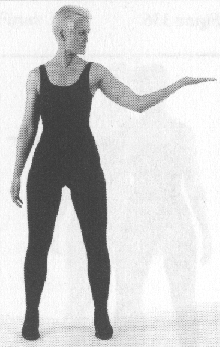
Fig. 335 |
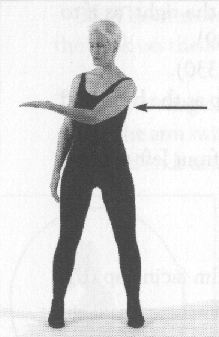
Fig. 336 |
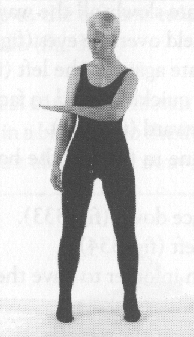
Fig. 337 |
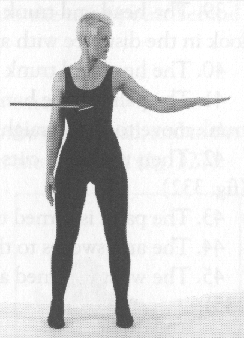
Fig. 338 |
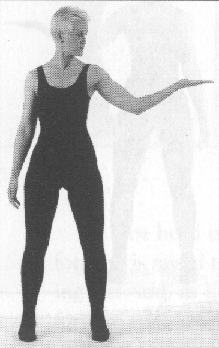
Fig. 339 |

Fig. 340 |
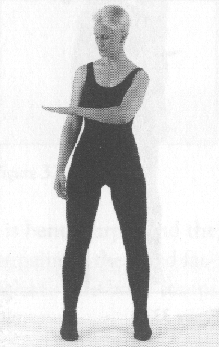
Fig. 341 |
The fifth magical pass is made up of twenty-five movements.
52. The hand draws a large circle in front of the body, with the palm of the hand facing forward as the circle is drawn. The movement ends at a point in front of the right shoulder; the palm is facing up (fig. 342).
53. The elbow turns up as the wrist and hand turn to face down. The palm of the hand is slightly hollowed (fig. 343).
54. The hand draws an oval-shaped line from right to left as if scooping a chunk of matter. When it comes to the position where it started, the palm is facing up (fig. 344).
55. The hand drops to the level of the groin, fingers pointing to the ground (fig. 345).
56. The palm of the hand is turned to face the body (fig. 346).
57. Then it moves, following the contour of the body, fingers pointing toward the ground, to a place four or five inches away from the left thigh (fig. 347).
58. A quick turn of the wrist makes the palm face the thigh (fig. 348).
59. The head turns to the left as the hand is raised, as if rubbing the fingers along a straight surface, to the level of the eyes (fig. 349).
60. From there, it descends at an angle to a point slightly to the left side of the groin. The head follows the movement of the hand (fig. 350).
61. The hand is raised again to the level of the eyes, at an angle. It reaches a point exactly on the division line of the left and right bodies, right in front of the eyes, a foot and a half away from them (fig. 351).
62. The hand descends again at an angle, to a point in front and slightly to the right of the groin (fig. 352).
63. The hand is raised again, drawing another slanted line, to a point in front of the eyes in line with the shoulders; the head follows the movement to the right (fig. 353).
64. The hand descends in a straight line to a point a foot away from
the right thigh (fig. 354).
In the seven preceding movements, three peaks have been drawn,
the first one on the left, the second one on the very center dividing line,
and the third to the right.
65. The hand changes position so the palm faces left (fig. 355).
66. The hand is raised to draw a curved line that fits exactly in between the right and center peaks drawn before (fig. 356).
67. There the palm of the hand is made to face the right (fig. 357).
68. The hand descends to the level of the groin and stops at the dividing line between the left and the right bodies (fig. 358).
69. The palm changes directions there again and faces left (fig. 359).
70. The hand is raised to a point between the middle peak and th left peak at the level of the eyes (fig. 360).
71. The palm is turned to face right (fig. 361).
72. The hand descends all the way down to the point in front of th thigh where it began (fig. 362).
The peaks drawn in the eight movements of this second phase ar slightly round, as opposed to the very angular peaks drawn before.
73. The hand is turned once more to have the palm face forward (fig. 363)
74. The arm moves over the head as if to pour on the right face and body an invisible substance (fig. 364).
75. The hand is dropped down (fig. 365). Making a half-circle, the elbow rotates to the back (fig. 366).
76. As if it were a knife going into its sheath, the hand slides over
the center of vitality around the pancreas and the spleen (fig. 367).
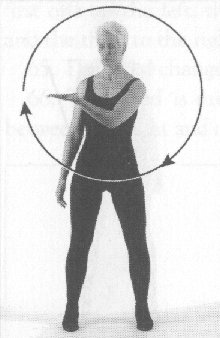
Fig. 342 |
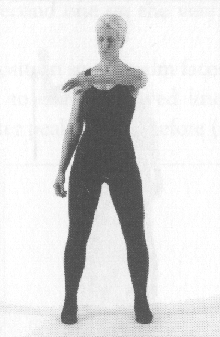
Fig. 343 |
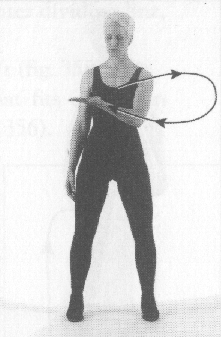
Fig. 344 |
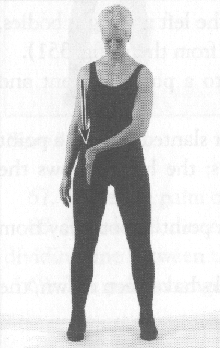
Fig. 345 |
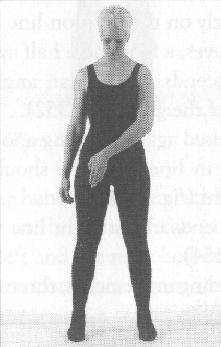
Fig. 346 |
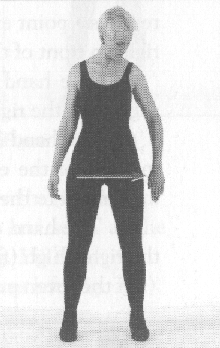
Fig. 347 |
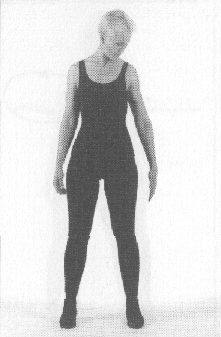
Fig. 348 |
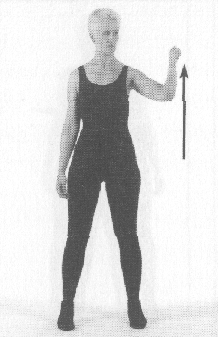
Fig. 349 |
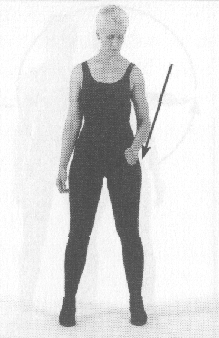
Fig. 350 |
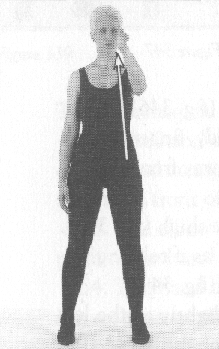
Fig. 351 |
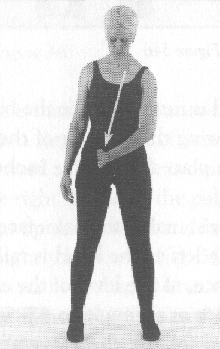
Fig. 352 |
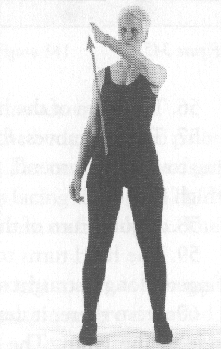
Fig. 353 |
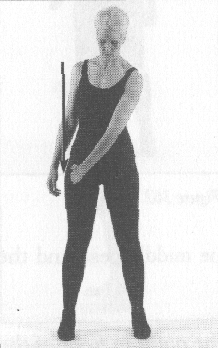
Fig. 354 |
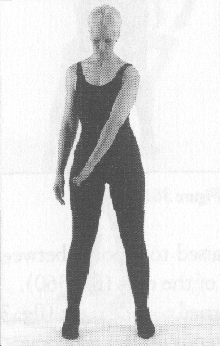
Fig. 355 |
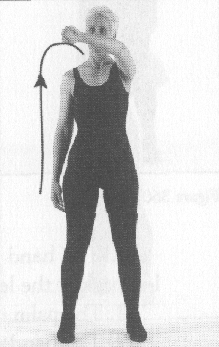
Fig. 356 |
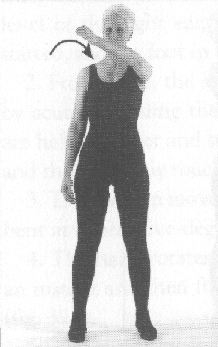
Fig. 357 |
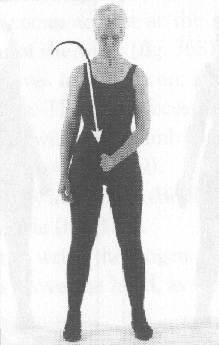
Fig. 358 |
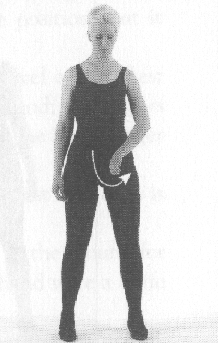
Fig. 359 |
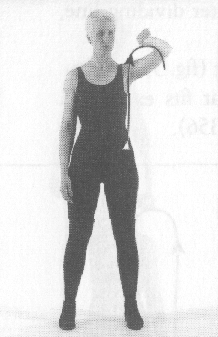
Fig. 360 |
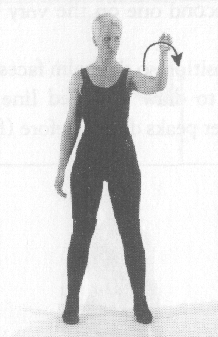
Fig. 361 |
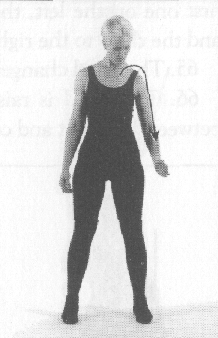
Fig. 362 |
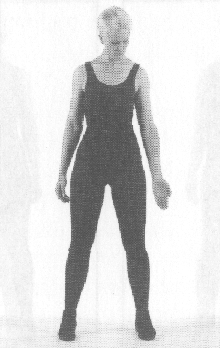
Fig. 363 |
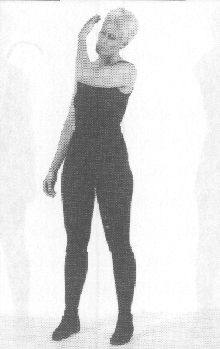
Fig. 364 |
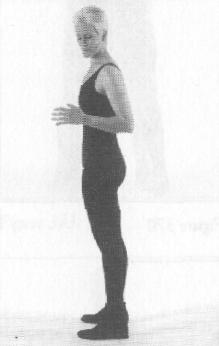
Fig. 365 |
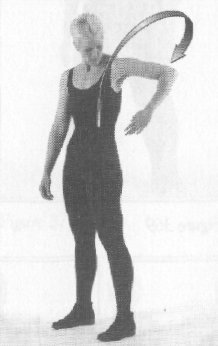
Fig. 366 |
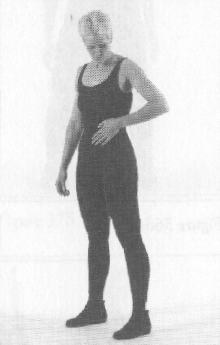
Fig. 367 |